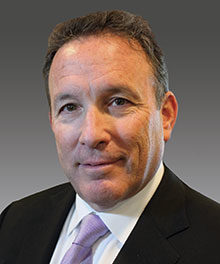The Student-Loan Squeeze

The U.S. Department of Education just announced interest rates for student loans will be 6.53% for 2024-25—the highest rate in a dozen years. The rate for graduate students will be even steeper, 8.08%, up from 7.05%.
I’m always concerned about any development that could prevent promising students from getting the education they need to pursue successful careers. Increases in the cost of student loans tend to disproportionately affect families of modest means and from underrepresented groups whose only option is to borrow, as I had to do when I attended college.
The changes are not happening in a vacuum. As we’ve already seen, inflated prices for food, housing, and transportation affect low- and moderate-income Americans more than higher-income counterparts, whose investments sometimes benefit from the interest-rate bumps. Many families are struggling with mounting credit card debt as they struggle to keep up.
The higher cost of student loans will very likely add to the talent shortage in accounting. Fewer students are already opting to pursue accounting careers than in the past. To stem the tide, the National Pipeline Advisory Group, an independent national group of stakeholders from the accounting profession, issued recommendations this week for improving talent acquisition and retention that included addressing the steep investment of time and money students must make in their education.
Unfortunately, there are no easy answers to higher-cost student loans. The Department of Education operates in the same high-interest-rate environment as everyone else and can’t just wave a magic wand to make market conditions disappear or change for every borrower. At the same time, equitable access to higher education isn’t just a nice-to-have—it’s a foundation of our democracy. The cost of college has gotten so high that the solutions middle-class families used in the past to bootstrap their way through the expenses, like working two jobs, may not cut it, especially if they have more than one child.
The most recent news is that help could be in sight for some students. President Biden just extended an important application deadline for borrowers who want to apply for student loan forgiveness. He has introduced a plan to eliminate accrued interest for 23 million student loan borrowers and clear college debt for 4 million Americans. Where was he when I graduated from college, $10,000 in debt from a $12,000 education? My first accounting job paid me $1,200 per month ($14,500 annually) with $96 of that monthly going to pay back my loans.
However, relying on one-time loan forgiveness programs to fix a broken system isn’t a long-term solution. It can be a disincentive to loan repayment among those who don’t qualify, and it doesn’t help those heading off to college this fall.
If we want to have a deep talent pool in the future, it will be incumbent upon those of us in the accounting profession—in education, professional organizations, and firms active in the field—to come together to find creative ways to support students and to help connect them to resources that might benefit them, such as the scholarships the AICPA offers.
I’ve never been more optimistic about the career possibilities in accounting. However, we’ll only be able to bring our profession to new heights with the best and brightest college graduates helping us step into the future.
